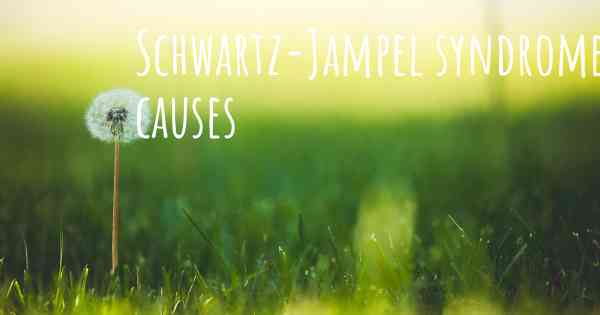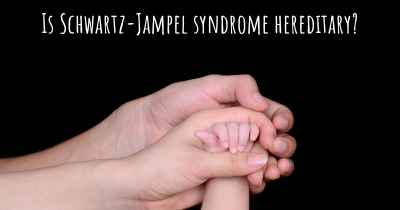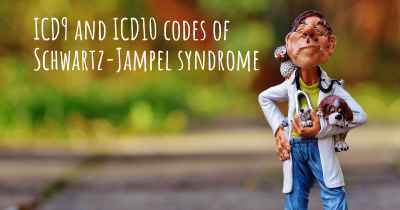Which are the causes of Schwartz-Jampel syndrome?
See some of the causes of Schwartz-Jampel syndrome according to people who have experience in Schwartz-Jampel syndrome

Schwartz-Jampel syndrome is a rare genetic disorder that affects various systems of the body. It is characterized by distinctive facial features, skeletal abnormalities, and muscle stiffness. The syndrome was first described by Schwartz and Jampel in 1962 and is also known as chondrodystrophic myotonia.
The exact cause of Schwartz-Jampel syndrome is still not fully understood. However, it is known to be caused by mutations in the HSPG2 gene, which provides instructions for producing a protein called perlecan. Perlecan is an essential component of the extracellular matrix, which is a network of proteins and other molecules that provide structural support to cells and tissues.
When the HSPG2 gene is mutated, it leads to a deficiency or abnormality in perlecan production. This disruption in the extracellular matrix affects the development and function of various tissues and organs, resulting in the characteristic features of Schwartz-Jampel syndrome.
One of the key features of Schwartz-Jampel syndrome is the presence of muscle stiffness or myotonia. Myotonia is caused by abnormal electrical activity in the muscles, leading to prolonged muscle contractions and difficulty in relaxing the muscles. This muscle stiffness can affect various muscle groups, including the face, limbs, and trunk.
The facial features associated with Schwartz-Jampel syndrome are quite distinctive and include a small mouth with pursed lips, a flattened nasal bridge, a high-arched palate, and a small chin. These facial characteristics can contribute to difficulties with feeding, breathing, and speech.
Skeletal abnormalities are another hallmark of Schwartz-Jampel syndrome. These abnormalities can include short stature, joint contractures, scoliosis (curvature of the spine), and abnormal bone development. The joint contractures, which are fixed and often present at birth, can restrict movement and lead to further complications.
Other symptoms that may be present in individuals with Schwartz-Jampel syndrome include vision problems, such as cataracts or myopia (nearsightedness), hearing loss, and dental abnormalities. Additionally, individuals with the syndrome may experience respiratory difficulties due to the small size of the airways and muscle weakness in the chest wall.
Schwartz-Jampel syndrome is inherited in an autosomal recessive manner, which means that both parents must carry a copy of the mutated gene for their child to be affected. If both parents are carriers, there is a 25% chance with each pregnancy that their child will have the syndrome.
Diagnosis of Schwartz-Jampel syndrome is typically based on the presence of characteristic physical features and a thorough clinical evaluation. Genetic testing can confirm the diagnosis by identifying mutations in the HSPG2 gene.
Management of Schwartz-Jampel syndrome focuses on addressing the specific symptoms and complications associated with the disorder. This may involve a multidisciplinary approach, including the involvement of orthopedic specialists, ophthalmologists, dentists, and physical therapists.
Treatment options for Schwartz-Jampel syndrome are primarily supportive and aim to improve quality of life. These may include physical therapy to improve muscle strength and flexibility, orthopedic interventions to address skeletal abnormalities, and assistive devices to aid with mobility.
In conclusion, Schwartz-Jampel syndrome is a rare genetic disorder caused by mutations in the HSPG2 gene, leading to abnormalities in perlecan production and disruption of the extracellular matrix. The syndrome is characterized by distinctive facial features, skeletal abnormalities, and muscle stiffness. Early diagnosis and a comprehensive management approach can help individuals with Schwartz-Jampel syndrome lead fulfilling lives despite the challenges posed by the disorder.








